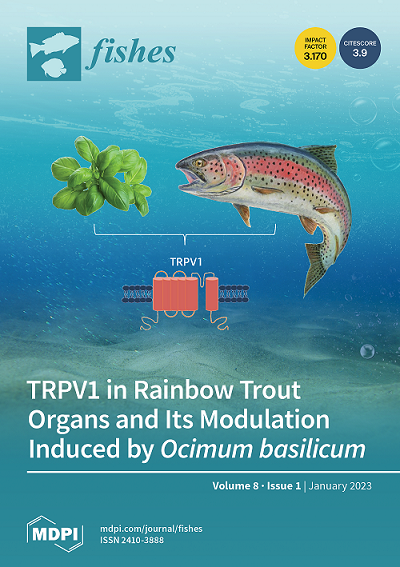Is a Fishing Moratorium Needed in Lake Honghu, Southern China? A Stomach Content Analysis of the Anchovy (Coilia brachygnathus)
IF 2.1
3区 农林科学
Q2 FISHERIES
引用次数: 0
Abstract
Since 2017, a fishing moratorium has been enforced in Lake Honghu as part of Chang–Jiang’s biodiversity conservation strategy. However, given that the lake is a semi-closed aquatic ecosystem and no longer serves as a habitat for certain fishes of the mid–lower Chang–Jiang basin, the efficacy of this moratorium remains uncertain. To address the question from a trophic ecology perspective, a stomach content analysis was performed on captured anchovies of C. brachygnathus, a current predominant species in Lake Honghu, from November 2020 to October 2021. The results showed that copepods, shrimps, and macrophytes were the main components of this anchovy’s diet, and there were size-related shifts in diets. The dominance of C. brachygnathus, a pelagic–littoral omnivore in this lake, implies a lacustrine environment shift triggered by continued human disturbances. The utilization of macrophytes as the main food items by large-sized anchovies of Lake Honghu has partially contributed to the rapid degradation of submerged vegetation. This highlights the need to remove large-sized individuals of C. brachygnathus and Carassius auratus, another benthic-omnivorous dominant fish, in order to effectively restore the aquatic vegetation and ecosystem of Lake Honghu. The current implementation of fishing moratoriums in subtropical shallow floodplain lakes such as Lake Honghu should be reviewed critically.中国南方洪湖需要休渔期吗?凤尾鱼胃内容物分析
自2017年以来,作为长江生物多样性保护战略的一部分,洪湖实施了休渔期。然而,鉴于该湖是一个半封闭的水生生态系统,不再是长江中下游流域某些鱼类的栖息地,这一禁令的效果仍不确定。为了从营养生态学的角度解决这个问题,我们于2020年11月至2021年10月对捕获的虹湖优势物种C. brachygnathus凤尾鱼进行了胃内容物分析。结果表明,桡足类、虾类和大型植物是这条凤尾鱼饮食的主要组成部分,并且饮食中存在与大小相关的变化。该湖泊中上层-沿海杂食性动物C. brachygnathus的优势表明,持续的人类干扰引发了湖泊环境的转变。洪湖大型凤尾鱼以大型植物为主要食物来源,是洪湖淹没植被快速退化的部分原因。因此,为了有效恢复洪湖的水生植被和生态系统,有必要清除大型brachygnathus和Carassius auratus(另一种底栖杂食性优势鱼)。目前在洪湖等亚热带浅水漫滩湖泊实施的休渔期应受到严格审查。
本文章由计算机程序翻译,如有差异,请以英文原文为准。
求助全文
约1分钟内获得全文
求助全文

 求助内容:
求助内容: 应助结果提醒方式:
应助结果提醒方式:


